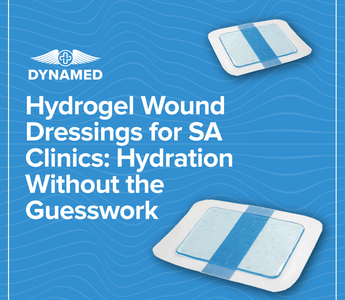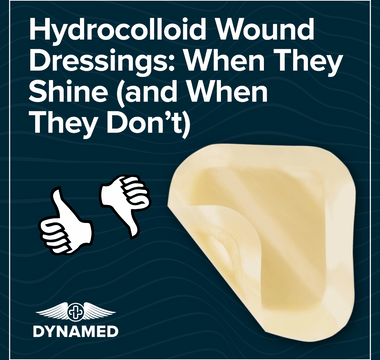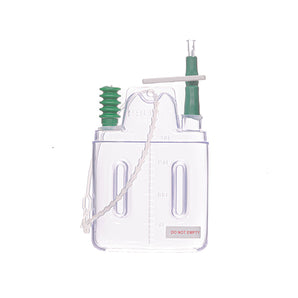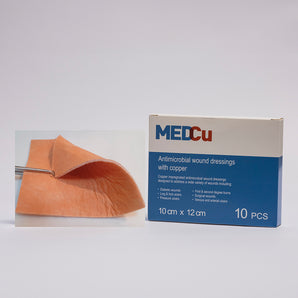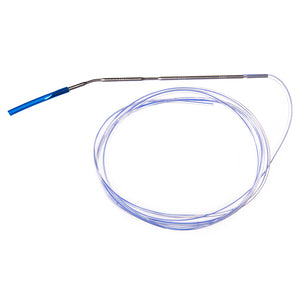Introduction
Hydration is often the missing piece in effective wound healing. Many South African clinics face challenges with burns, pressure ulcers, and diabetic foot ulcers (DFUs) - all of which can stall without proper moisture balance. Hydrogel wound dressings are designed to rehydrate dry tissue, promote autolytic debridement, and ease patient discomfort. This article explores how they work, where they fit best, and how South African healthcare providers can stock and apply them with confidence.
Key Points (Quick Takeaways):
-
Hydrogel wound dressings rehydrate dry wounds and promote autolytic debridement.
-
Ideal for burns, pressure ulcers, and diabetic foot ulcers in South African clinics.
-
Not recommended for heavily exuding or infected wounds.
-
Can be combined with secondary dressings such as foam for protection and absorption.
- Reduce pain, improve comfort, and help clinics manage wounds in resource-limited settings.
What Is a Hydrogel Wound Dressing?
Hydrogel dressings are composed of water or glycerin-based polymers that donate moisture directly to the wound bed. This moisture softens necrotic tissue, encourages debridement, and creates the right environment for new tissue to form.
Benefits of Hydrogels
-
Provide immediate cooling and soothing for burns.
-
Encourage autolytic debridement (natural removal of dead tissue).
-
Reduce pain by maintaining a moist, protective surface.
- Easy to apply in both hospital and outpatient settings.
When Hydrogel Dressings Are Most Effective
Burns Care
Hydrogels are widely used in superficial and partial-thickness burns, common in South African households and workplaces. They provide hydration, reduce pain, and protect fragile new tissue.
Pressure Ulcers
For patients confined to bed, pressure ulcers can dry out and stall healing. Hydrogel dressings reintroduce moisture and protect against further tissue damage.
Diabetic Foot Ulcers (DFUs)
South Africa has one of the highest rates of diabetes on the continent. Hydrogels are useful for DFUs with necrotic tissue, softening it for safe removal while preparing the wound for secondary treatment.
When Hydrogels Don’t Work
Hydrogel wound dressings are not suited to every situation.
Heavily Exuding Wounds
Excessive wound fluid can overwhelm hydrogels. In these cases, foam or alginate dressings are better choices.
Infected Wounds
Because hydrogels lock in moisture, they can worsen bacterial growth in wounds that are already infected. Antimicrobial silver or copper dressings are preferable here.
Large Traumatic Wounds
Hydrogels provide moisture but little absorption or structural support, making them less effective for complex trauma wounds.
Combining Hydrogels with Other Dressings
Hydrogels are rarely used in isolation for long-term treatment. They often work best as part of a layered approach.
Hydrogel + Foam
Foam adds absorption, making this pairing useful for moderate exudate.
Hydrogel + Silver or Copper
Combining hydration with antimicrobial protection gives clinicians a dual-action wound care solution.
Hydrogel + Secondary Film
Transparent film dressings secure the hydrogel while keeping the wound sealed from contaminants.
Local Application in South African Clinics
In many South African settings, especially rural clinics, patients cannot return daily for wound care. Hydrogel dressings provide relief and can stay in place for up to 72 hours, reducing the burden on staff and improving patient comfort. Procurement managers should ensure hydrogel dressings are part of a balanced stock list alongside foams, hydrocolloids, and antimicrobial options.
Conclusion
Hydrogel wound dressings are an essential tool for South African clinics. By donating moisture, easing pain, and supporting autolytic debridement, they play a key role in burns care, pressure ulcer management, and diabetic foot ulcer treatment. They are not suitable for all wounds, but when used in the right context and often combined with other dressings, they offer a simple, effective way to speed healing and improve patient outcomes.
Dynamed Pharmaceuticals
Phone: 0861 00 00 43
Website: dynamed.co.za
Email (Sales): sales@dynamed.co.za
Email (Info): info@dynamed.co.za
Google Maps: Find us here
FAQs
1. What is a hydrogel wound dressing used for?
It is used to rehydrate dry wounds, promote autolytic debridement, and soothe burns, pressure ulcers, and diabetic foot ulcers.
2. How long can a hydrogel dressing stay on?
Typically up to 72 hours, depending on exudate levels and the wound type.
3. Can hydrogel dressings be used on infected wounds?
No. Hydrogels are not recommended for infected wounds, as they can trap bacteria and worsen infection.
4. Are hydrogels painful to remove?
No. Because they maintain a moist environment, they are generally painless to remove and protect fragile new tissue.
5. Do hydrogel dressings need a secondary dressing?
Often yes. Foams, films, or antimicrobial dressings are commonly used on top to improve absorption and protection.
6. Where can I find hydrogel wound dressings in South Africa?
ISO-certified suppliers like Dynamed stock hydrogel dressings for hospitals, clinics, pharmacies, and distributors across South Africa and the wider SADC region.

